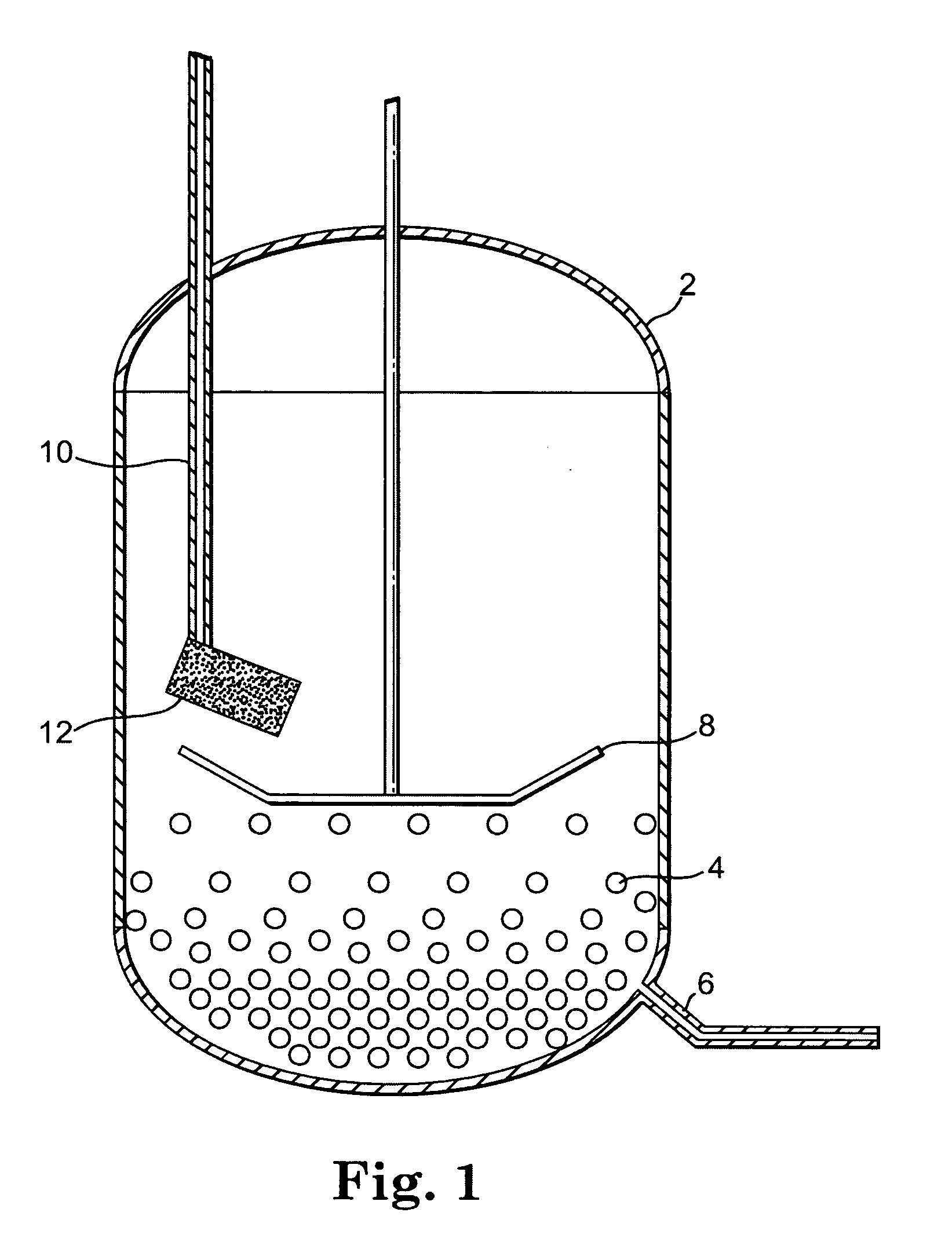Peptide synthesis and deprotection using a cosolvent
- Summary
- Abstract
- Description
- Claims
- Application Information
AI Technical Summary
Benefits of technology
Problems solved by technology
Method used
Image
Examples
example 1
Preparation of Enfuvirtide
[0088] This example describes the formation and global deprotection of protected enfuvirtide using an organic cosolvent. This example also describes additional processing steps, including decarboxylation of the enfuvirtide carbamate. Four batches (A-D) of the peptide were prepared.
[0089] As starting material, a side-chain protected, N-terminal acetylated enfuvirtide peptide (Ac-AA(1-36)NH2), having the formula: Ac-Tyr(tBu)-Thr(tBu)-Ser(tBu)-Leu-Ile-His(trt)-Ser(tBu)-Leu-Ile-Glu(OtBu)-Glu(OtBu)-Ser(tBu)-Gln(trt)-Asn(trt)-Gln(trt)- Gln-Glu(OtBu)-Lys(Boc)-Asn(trt)-Glu(OtBu)-Gln(trt)-Glu(OtBu)-Leu-Leu-Glu(OtBu)-Leu-Asp(tBu)-Lys(Boc)-Trp(Boc)-Ala-Ser(tBu)-Leu-Trp(Boc)-Asn(trt)-Trp(Boc)-Phe- NH2 (SEQ ID NO:1 with side chain protecting groups) was prepared using a combination of solid-phase and solution-phase peptide synthesis steps. Ac-AA(1-36)NH2 can be prepared according to the methods described in U.S. Pat. No. 6,015,881.
[0090] Briefly, enfuvirtide peptide ...
PUM
| Property | Measurement | Unit |
|---|---|---|
| Temperature | aaaaa | aaaaa |
| Bioconcentration factor | aaaaa | aaaaa |
| Weight | aaaaa | aaaaa |
Abstract
Description
Claims
Application Information
 Login to View More
Login to View More - R&D
- Intellectual Property
- Life Sciences
- Materials
- Tech Scout
- Unparalleled Data Quality
- Higher Quality Content
- 60% Fewer Hallucinations
Browse by: Latest US Patents, China's latest patents, Technical Efficacy Thesaurus, Application Domain, Technology Topic, Popular Technical Reports.
© 2025 PatSnap. All rights reserved.Legal|Privacy policy|Modern Slavery Act Transparency Statement|Sitemap|About US| Contact US: help@patsnap.com

